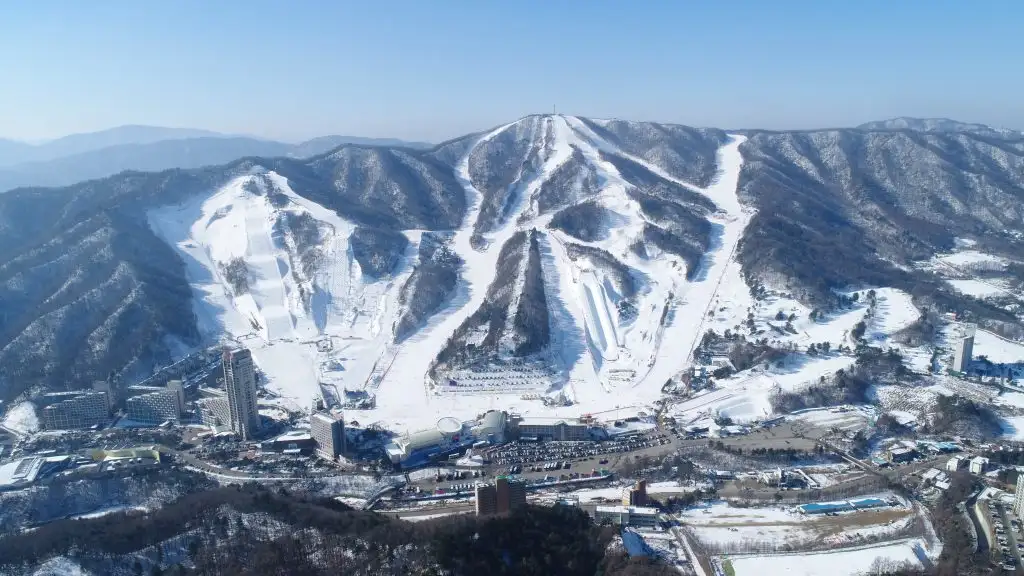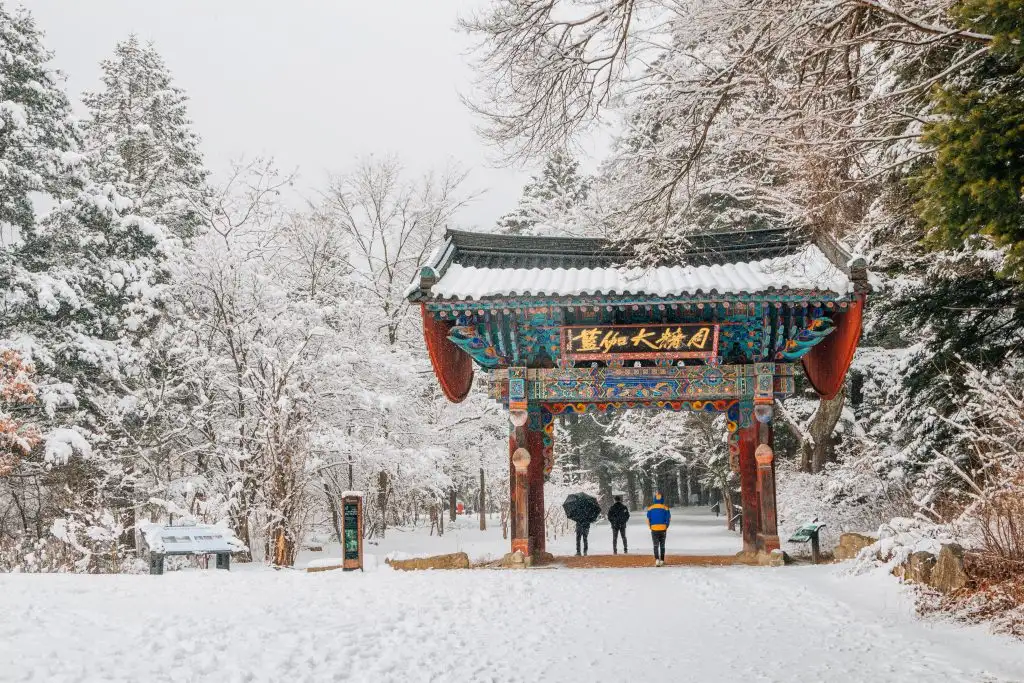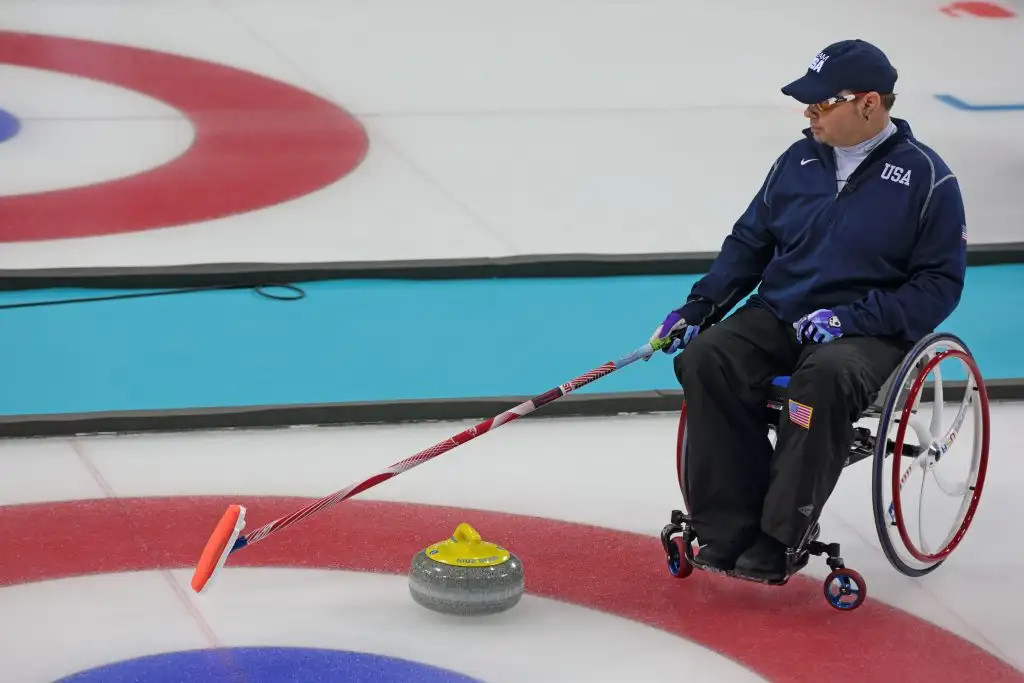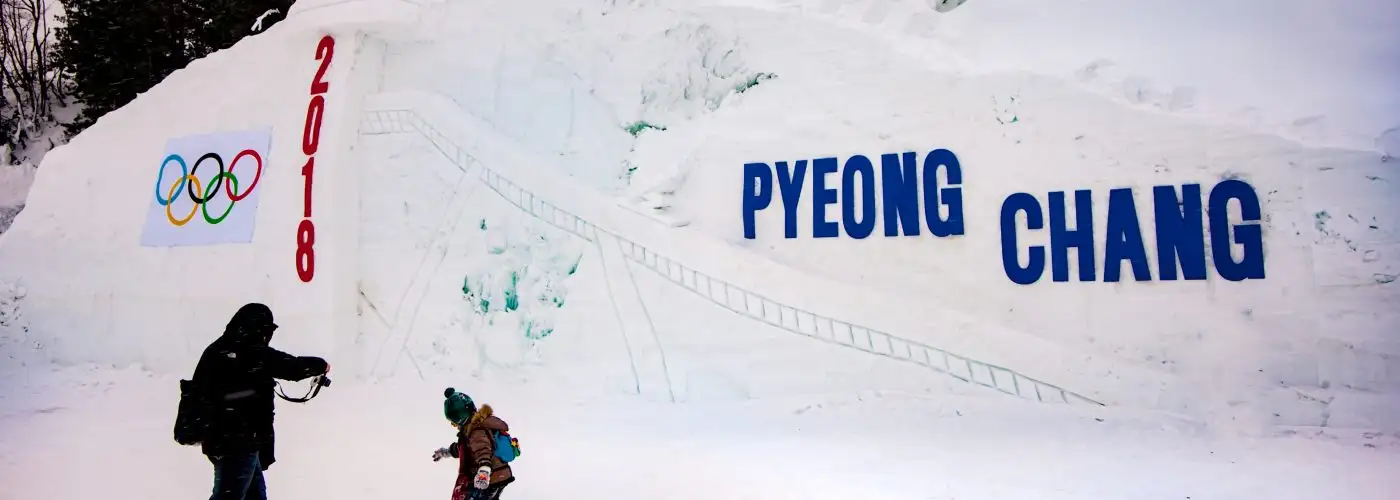Considering a trip to the 2018 Winter Olympics in Pyeongchang, South Korea? I recommend you go for it. Not only will you be watching the best athletes in the world at their absolute peaks, but you will also find yourself in the middle of a global event with people from all over the world, and with the eyes of the world watching. These factors come together to make the Olympics a very special experience. I worked at and attended the past five summer Games, and count those sometimes excruciatingly long and hard days among the best experiences of my life.
Those concerned with security should be heartened by recent news that North Korea has agreed to send athletes to the Winter Olympics this year. The Olympic Winter Games open on February 9 and close on February 25, while the Paralympic Games open March 8 and close on March 18.
How to Get to the Winter Olympics in Pyeongchang
Most international travelers will fly into Seoul’s Incheon Airport. To accommodate these folks, a high-speed railway was built to link the capital to the main Olympic venues in about 90 minutes. Fares from Los Angeles to Incheon are only about $800 at present with a stop in Hong Kong, and I saw a nonstop from New York JFK for $987—not bad at all to go halfway around the world.
If you are still researching airfares, other gateway options include airports in Yangyang and Wonju.
U.S. citizens do not need a visa, just a valid passport. For citizens of other countries, check with your government for complete information.
Pyeongchang 2018 Venues

There are three main venues for the Winter Olympics in Pyeongchang.
Pyeongchang Mountain Cluster will be home to the biathlon, cross-country skiing, ski jumping, sliding sports (bobsled, luge, skeleton), the snow park (freestyle skiing and snowboarding), and the Jeongseon and Yongpyong Alpine Centers (alpine skiing).
Gangneung Coastal Cluster will host hockey, curling, figure skating, and speed skating.
Olympic Plaza and Stadium will host non-competition activities, including many medal ceremonies. Events will also be broadcast on big screens here throughout the Games. The non-competition venues are worth a visit if you want to get a sense of the pure spectacle surrounding the Winter Olympics, as this is where a lot of it happens. The big Olympic plazas feature cultural events, exhibits, performances, and corporate installations with all kinds of stuff going on.
For a list and maps, see Pyeongchang2018.com.
Getting Around the Winter Olympics
At present, the official site notes that personal transportation will be restricted in many areas of the host city and around the venues, but has yet to post specifics, noting only that “more information will be available in January 2018.”
However, the site very clearly states that “cars and other means of transportation by individuals will not be allowed to access around each venue,” and overall, unless you have some reliable information that drop-offs are possible, I recommend taking this seriously. At the Rio Games I was in a taxi for a solid 45 minutes simply trying to find a place where Games security would let me get out of the car and walk to the main press center.
At present it appears that there will be a park-and-ride approach to transportation overall; to get to these depots, public transportation or taxis will probably be your best bet. Taxis cost 2800 won as a base rate ($2.60 USD at present), then another 200 won (19 cents) for every 152 meters, which comes to about two dollars per mile.
Even when using official transport, you should also expect to do (and leave time for) some walking, particularly at outdoor venues. You might get off a bus in a remote parking area, walk to the security area, and then walk farther to the ticketing area. Even after you are inside the venue, you might have to hoof it to a good spot.
Additionally, some outdoor venues have no official “seating” per se; at the Rio mountain biking venue, for example, you could climb all around the area to see different features of the course, escape crowds, and find interesting viewpoints.
Accessible seating is available in several venues; you can find more information at the very bottom of this page.
Winter Olympics Tickets
At press time, tickets were available for almost all sports at some point during the two-week run. While this isn’t great news for the organizers, who place sales at about 64 percent of their goal at present, it is good news if you plan to attend.
For U.S. customers, all ticket sales are handled by CoSport. In other countries, see this guide to authorized ticket resellers by region and country.
Once the Games start, you can purchase tickets directly at the venues, as well as at the Olympic Stadium and other similar locations.
Security
Security at any Olympic Games can be pretty strict, and given recent international events it is a fair assumption that the 2018 Games will be at least as if not more stringent than ever. Here are a few rules of thumb that will help.
Don’t assume you can bring a bag into a venue; official policies on things like this can be very much in flux once the Olympics get underway, so I recommend going without if at all possible.
Even if you can bring a bag, bag searches are invariably the biggest time drain you will encounter when attending an event.
Scan for the “best” line as you approach the venue; you can sometimes save yourself some time by choosing well.
You will sometimes see formidable security at venue shops as well; be prepared.
Sightseeing Around Pyeongchang

One of the best ways to do some sightseeing without “missing” the Olympics is simply to purchase tickets to the more remote venues, then take in some sights while you are there. At many Olympics, outlying venues are located in areas featuring excellent natural features and/or “regular” communities, and just by going you can experience the host country more intimately than you might think.
Otherwise, international travelers who fly into Seoul will choose to spend a few days at the beginning or end of their trip in the capital. Some other recommended attractions:
The DMZ, or Demilitarized Zone. Oddly enough, this narrow band of land between South and North Korea is a formidable tourist attraction, and not just because of its geopolitical importance. Largely untouched by humans for some time, it has also become a model of biodiversity. The DMZ is about six hours from Pyeongchang, although it is probably easier to get there from Seoul.
The Woljeongsa Temple and Pyeongchang Hyanggyo, a restored Confucian school, are among the most popular local attractions.
For more see Pyeongchang2018.com and Pc.Go.kr.
Mobile Apps
The 2018 Olympics mobile app is available on iOS and Android, and although I have found Olympics apps not always to be perfect, overall I recommend them strongly, as they do tend to be solid on the basics (locations, event times, results, etc.).
Notably, I have also used the official app to get help from locals; particularly when you do not know the language, you can show them the app to get directions, direct a taxi driver, find bus stops, make sure you are getting on the right bus, and other simple but critical tasks.
More Tips and Information for the Winter Olympics
Check on ticket availability before you make extensive plans; everything else you will probably be able to figure out, but a sold-out event is a serious roadblock. Tickets will likely end up on StubHub and the like, but that is a risky approach.
Don’t be afraid to go see sports you would not typically care about. Some of my most memorable experiences attending and working at the past five summer Games have been while watching sports about which I knew little and thought I wasn’t interested in.
If you are planning to purchase souvenirs or gifts for folks back home, you may want to do so early in your trip, as the best items tend to sell out fairly quickly. This is especially the case if you want something specific to your favorite sport.
Make some time to visit the main Olympic Plaza and Stadium; it is sheer (and sometimes cheesy) spectacle, but it’s all part of the fun.
Every venue and activity I have ever seen at the Games has been very family-friendly, so you should feel comfortable bringing the kids. Security lines and transport tend to be the main challenges for youngsters, so come prepared (my son bagged some really unique Pokemon Go characters in Rio).
Don’t Forget the Paralympic Games

Although the Paralympic Games are smaller and get less attention, the events are equally as compelling, and in some cases extraordinarily so. Additionally, crowds are often much smaller, the overall cost lower, and the hassle factor greatly reduced. Further, if you waited until now to plan a trip, you have an extra month to make it all happen, as the Paralympics don’t start until March 8. To learn more, see the official Paralympics site for Pyeongchang.
More from SmarterTravel:
- Living Like a Local in Seoul, South Korea
- Getting Around South Korea: Transportation Tips
- 10 Ways to Survive a Long-Haul Flight
[viator_tour destination=”31742″]
Ed Hewitt is a seasoned globetrotter who brings you a biweekly glimpse into the latest travel news, views, and trends—and how they could affect your travel plans.
We hand-pick everything we recommend and select items through testing and reviews. Some products are sent to us free of charge with no incentive to offer a favorable review. We offer our unbiased opinions and do not accept compensation to review products. All items are in stock and prices are accurate at the time of publication. If you buy something through our links, we may earn a commission.
Related
Top Fares From
Today's Top Travel Deals
Brought to you by ShermansTravel
Greenland: Luxe, All-Incl. 11-Nt Exploration Small-Ship...
Swan Hellenic
 cruise
$3289+
cruise
$3289+
Ohio: Daily Car Rentals from Cincinnati
85OFF.com
 Car Rental
$19+
Car Rental
$19+
Shop and Save with Country Inns...
Patricia Magaña
 Hotel & Lodging Deals
Hotel & Lodging Deals




